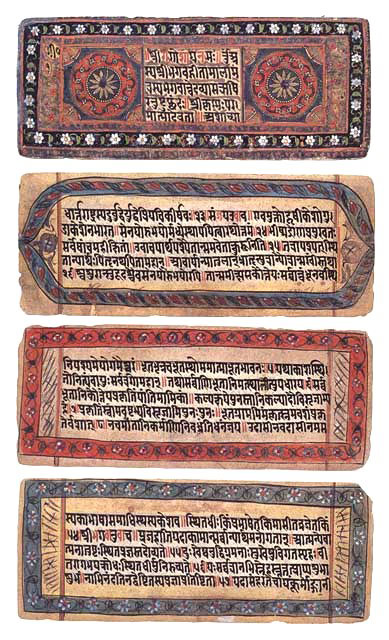The views expressed in our content reflect individual perspectives and do not represent the authoritative views of the Baha'i Faith.
Study the Holy Words, read your Bible, read the Holy Books, especially study the Holy Utterances of Baha’u’llah; Prayer and Meditation, take much time for these two. Then will you know this Great Thirst, and then only can you begin to Live the Life! – Abdu’l-Baha, Star of the West, Volume 9, p. 86.
One night a few years back, as I spoke at a fireside—an informal introductory meeting where people learn about the Baha’i Faith—someone asked me to name all the holy books. I had just read Abdu’l-Baha’s quote (above) to the group, and one person, who took the quote quite seriously, wanted a list.
That’s probably the toughest question anyone has ever asked me at a Baha’i fireside.
Humanity, in its written history of maybe the past six thousand years, has seen hundreds if not thousands of religions, for every tribe, culture and land. Most of them spread orally among peoples with no written language—but many left us sacred scriptures, profound holy books that contain the original messages from the founders of those religions. An exhaustive list of holy books would fill several thick books by itself, I told him.
“Okay,” he said, “just tell me the main ones, from the major religions that I’d recognize.” He really wanted to read them, so I tried to do my best. I’m certainly not a hierographologist—an expert in the study of sacred texts—but I did what I could, and gave him this short and therefore incomplete summary/list, which goes from the oldest Faith to the newest:

19th Century manuscript of the Bhagavad GIta
Hinduism has no single holy book, but offers several sacred texts: the Upanishads, the Vedas and the Bhagavad Gita (which means the Song of God). The Upanishads, often called Vedanta, reveal the main philosophical concepts of Hindu belief, while the four Vedas—the Rigveda, the Yajurveda, the Samaveda and the Atharveda—come from ancient sages. The Bhagavad Gita, commonly known as the Gita, actually makes up part of an ancient epic poem called The Mahabharata. The Gita presents an extended 700-verse conversation on a battlefield between Prince Arjuna and his spiritual guide Krishna—referred to in the Gita as Bhagavan (the Divine One), and generally thought of as the main prophet of Hinduism.
In Judaism, The Tanakh, or the Hebrew Bible (what Christians call the Old Testament), is the central holy book. It consists of the Torah (which means Teachings), comprised of the first five books of Moses (Genesis, Exodus, Leviticus, Numbers and Deuteronomy); the Nevi’im (which means Prophets), the chapters in the Hebrew Bible that begin with the Book of Joshua; and the Ketuvim (which means Writings), the chapters that begin with the Book of Psalms. The 45 chapters or books of the Hebrew Bible or the Tanakh describes the history, the spiritual teachings and laws of the Jewish people before the time of Christ.
Zoroastrians, the Middle Eastern and Persian religion of the prophet Zoroaster, also has several primary holy books, usually collected under the name Zend-Avesta, which includes the Yasna and the Gathas.
For Buddhists, the oldest and best-known holy book comes from the Pali Canon of the Theravada school of Buddhism, and is called the Tipitaka, which means Three Baskets: the Vinaya (Discipline Basket), dealing with rules for Buddhist monks and nuns; the Sutta (Sutra/Sayings Basket) made up of various discourses, mostly ascribed to the Buddha, but some to disciples; and the Abhidhamma, (metaphysical and philosophical summaries and lists). In Tibetan Buddhism, the 108-volume Kangyur represents the reported direct sayings of the Buddha.
For Christians, the Old Testament or Hebrew Bible of Judaism and the New Testament of Christianity combine to produce the Bible. The New Testament has 27 books or chapters, and tells the story of the life of Christ as well as the teachings of the Church and Christ’s Apostles. Although Jesus Christ’s direct teachings are found throughout the New Testament, the four chapters called “Gospels”—Matthew, Mark, Luke, and John—recount his life and martyrdom.
In Islam, The Qur’an (which literally means the Recitation) consists of 114 chapters, called suras. Muslims believe that the Qur’an, revealed by God (Allah) to Muhammad over a 23-year period and then compiled after his death in 632 AD, represents the Supreme Being’s moral guidance for humanity. Islam accepts the validity of the previous Abrahamic holy books (the Old and New Testaments), just as several newer Faiths accept the teachings of the older ones.
The Baha’i Faith has many sacred scriptures, revealed and written personally by Baha’u’llah, the Bab and Abdu’l-Baha. They range from mystical books like The Hidden Words and the Seven Valleys; to books on philosophy and religion like the Book of Certitude and Epistle to the Son of the Wolf; to books of laws and ordinances, primarily The Most Holy Book (or, in Persian, the Kitab-i-Aqdas); to numerous letters, tablets, and even mystical poetry. Baha’u’llah wrote more than 100 volumes of sacred Baha’i texts—the Baha’i Faith is the only major world religion with sacred scriptures written directly by its founder. Studying Baha’u’llah’s writings allows us direct access to the most recent holy books.
All of these holy books from the world’s great Faiths, taken in their entirety, have inspired and directed the lives of billions of people over many thousands of years. They have guided all of humanity. Multiple historians have written that no greater or more influential force has ever existed in the world. When you think about it, these few books have produced a remarkable and unparalleled outcome. The sacred scriptures from the teachings of a few lone prophets, belittled, scorned and persecuted in their respective eras, exerted a massive and lasting impact on the Earth, its civilizations and its peoples.
Probably for the first time in human history, those sacred scriptures have now become readily available and readable in many languages. Good libraries will have them all, or you can find them free in several places online, like www.holybooks.com and www.BahaieBooks.org. Finally, everyone can read them.
While some of the older sacred scriptures have questionable authenticity as a result of so many translations and permutations over so many centuries, all of these holy books have an enormous endowment of spiritual energy to influence the soul. Written in exalted language, which can sometimes make them challenging to read, digest and understand, they still exhibit profound wisdom, deep insight and thrilling power. The more you read and attempt to comprehend them, the more you’ll develop that great thirst for spirituality the Baha’i teachings so enthusiastically recommend.
Next: Take Much Time for Prayer and Meditation
You May Also Like
Comments

















Does it matter whether words – in translation – are authoritative or not? Yes, when we use those words in support of teaching the Faith. That is why the Guardian made a clear distinction between authoritative texts and pilgrims’ notes.
Nowhere in the Writings does the Master encourage people to acquire a “thirst for Spirituality”. He mentions a thirst for truth, a thirst for reality, a thirst for the fountain of the knowledge of God, etc.; but not a thirst for Spirituality. Nor does the Master tell us to acquire a thirst; He assumes, I suppose, that a seeker after truth already has a thirst for truth.
Why do you use pilgrims' notes and attribute the words to Abdu'l-Baha?